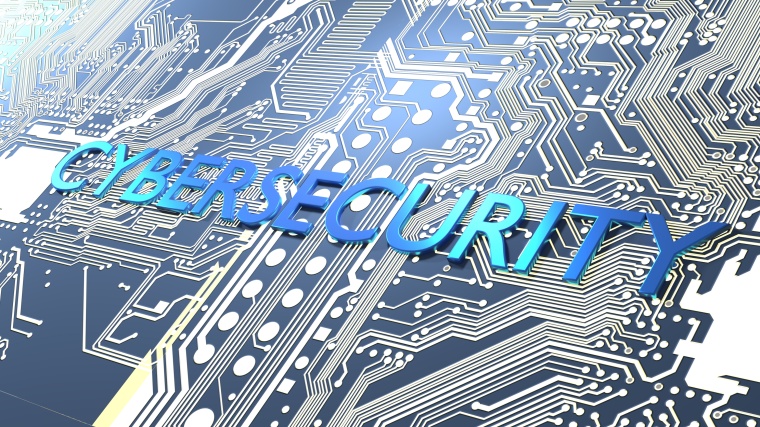Euralarm: Cybersecurity for Radio Equipment Directive

The Radio Equipment Directive looks to be prepared for an update where cybersecurity requirements will become part of the directive and with that part of the CE-marking. Euralarm stated that while it supports the need for increased cybersecurity, the fire and security industry will preferably support a horizontal cybersecurity regulation. Nevertheless, if embedded in the RED, Euralarm wants to ensure that the technical aspects addressing cybersecurity are relevant for wireless fire safety and security equipment and can work for manufacturers and service providers.
With incidents around privacy reported after updates from wireless equipment with official and unofficial software, the European Commission is urgently looking to enforce increased cybersecurity to protect consumers and to ensure that radio equipment manufacturers meet a level of cybersecurity before they release a product to the market. Because Horizontal Cyber regulation is still under construction and can take some time before being completed, it looks like the EC plans to do this through an update of the RED. These developments will impact companies that manufacture or market wireless Fire and Security equipment.
Following the Internet of Things, the industrial version of it, Industrial Internet of Things, now also enters a phase of wider adaption and deployment around numerous industries. It is predicted that the worldwide IoT spending will surpass 1 trillion dollars in 2022. More and more products and industrial assets with electronics, software, sensors, and network connectivity enable us to collect and exchange data. By connecting numerous devices and pieces of equipment through the Internet, Industrial IoT can help businesses operate more efficiently, make more informed decisions and unlock new revenue sources. However, the devices themselves also introduce serious risks for business and society with every device being a potential source for cyber criminals to unauthorised enter home, business or industrial networks. This threat is caused by the radio communication function inckuded in these devices which enables them to communicate via wireless networks and by the possibility to wirelessly update software or firmware on the devices.
The Radio Equipment Directive
Now that products are getting more and more connected, the European Commission is looking to create a legislative framework to make these products more resistant against cyber-attacks. This could be done by including cybersecurity requirements into directives and regulations of the New Legislative Framework, NLF. This framework sets mandatory product safety requirements that are necessary to put products on the EU market.
The Radio Equipment Directive, or RED, is the first Directive that is being considered for inclusion of cybersecurity requirements. The idea is to include the cybersecurity requirements through a delegated act on Internet-connected and wearable radio equipment. Such an act is a legally binding act that enables the Commission to supplement or amend non‑essential parts of EU legislative acts, for example, to define detailed measures.
Horizontal legislation
Putting aside the EU Cybersecurity Act and further pursuing the Radio Equipment Directive would bring a clear risk of overlaps and inconsistencies across European legislations, not only for radio equipment, but also for instance for low voltage equipment, machines and medical devices. It could result in legal uncertainty and significant impact in case of concurrent mandatory requirements and certification schemes. This would threaten European companies’ ability to compete across the Digital Single Market as well as globally, forcing them to misallocate scarce resources. Fearing a future patchwork of different legislations, the industry suggested a horizontal legislation for products.
Meanwhile, the European Commission initiated a public consultation on two essential requirements. It concerns the safeguards to ensure that the personal data and privacy of the user and of the subscriber are protected as well as certain features ensuring protection from fraud. This consultation laid down several proposals for the application of those two requirements to internet-connected radio-equipment and wearable radio-equipment. Based on the results of this consultation, the Commission mandated a consultancy firm to conduct an impact assessment study. In his report the contractor highlights that delegated acts are already mentioned in the RED and that they therefore should be preferred above legislation on cybersecurity which might take more time to develop. It is therefore unlikely that a horizontal cybersecurity-related legislation on products can still be developed in a short-term. The report adds that such a horizontal legislation could be considered at mid-term. Euralarm is presently supporting a proposal in this direction. The consultants also recommended that the European Standardisation Organisations should be mandated to pertain to the delegated acts. Both CEN-CENELEC and ETSI are now preparing themselves to get ready for this.
Euralarm recommends companies involved in the production of security equipment to stay informed on the development to ensure that the relevant technical aspects for fire safety and security equipment are embedded into the cybersecurity requirements.
Reconfigurable Radio Systems
Another RED related development that is taking place concerns the Reconfigurable Radio Systems, for example radio equipment that can be reconfigured by software. Under some conditions, installing new software or firmware could have an impact on the compliance of the equipment. The European Commission is therefore currently investigating this to ensure that the RED adequately addresses this issue and that reconfigurable radio systems for Europe's single market stay compliant with the Radio Equipment Directive after new or modified software is installed. The investigation is focused on the essential requirements of the RED itself: health and safety, EMC, efficient use of radio spectrum and requirements empowered by adopted delegated acts. Software implemented functions that have no influence on the compliance to these requirements are not technically impacted but the need for demonstration of no-impact will appear. That means that manufacturers of Wi-Fi connected smoke alarm devices would have to demonstrate that software updates do not impact RED compliance.
Euralarm therefore advises manufacturers of wireless equipment falling under the RED to follow these developments. The company also aims to make sure that additional legislation that could result from the current investigation will be feasible for manufacturers.















